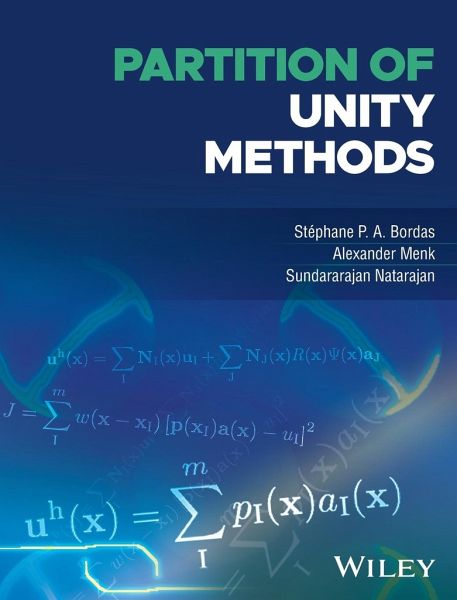
Partition of Unity Methods
Versandkostenfrei!
Versandfertig in über 4 Wochen
112,99 €
inkl. MwSt.
Weitere Ausgaben:

PAYBACK Punkte
56 °P sammeln!
First book to offer a guide to the foundations of the XFEM and its implementationA revolution similar to that initiated by the FEM is taking place through the XFEM, which is already implemented in leading commercial packages (ABAQUS, ANSYS, etc.) that are taught at undergraduate and post-graduate levels and to industrial end-users.XFEM provides a detailed overview of the basics around the newly introduced extended finite element method for applications in solving moving boundary problems. XFEM is introduced naturally as an extension of FEM, through simple one dimensional examples which then al...
First book to offer a guide to the foundations of the XFEM and its implementation
A revolution similar to that initiated by the FEM is taking place through the XFEM, which is already implemented in leading commercial packages (ABAQUS, ANSYS, etc.) that are taught at undergraduate and post-graduate levels and to industrial end-users.
XFEM provides a detailed overview of the basics around the newly introduced extended finite element method for applications in solving moving boundary problems. XFEM is introduced naturally as an extension of FEM, through simple one dimensional examples which then allow the introduction of higher-dimensional problems. Throughout the book, each key concept is highlighted by the corresponding piece of MATLAB code which is provided via an accompanying web portal. Uniquely, this portal allows readers to obtain real-time feedback and help from an existing community of more than 130 researchers and industrialists.
Demystifies the theory behind XFEM and makes it accessible to all with previous knowledge of the FEM
Provides a simple introduction to XFEM but also provides a range of tools which the reader can build upon to take on a large breadth of more complex problems.
Presents each key theoretical concept in parallel with its implementational aspects in the form of simple MATLAB routines provided along with the book via an interactive companion website and portal
Provides a detailed account of applications of XFEM to fracture mechanics, including techniques absent from current literature
A revolution similar to that initiated by the FEM is taking place through the XFEM, which is already implemented in leading commercial packages (ABAQUS, ANSYS, etc.) that are taught at undergraduate and post-graduate levels and to industrial end-users.
XFEM provides a detailed overview of the basics around the newly introduced extended finite element method for applications in solving moving boundary problems. XFEM is introduced naturally as an extension of FEM, through simple one dimensional examples which then allow the introduction of higher-dimensional problems. Throughout the book, each key concept is highlighted by the corresponding piece of MATLAB code which is provided via an accompanying web portal. Uniquely, this portal allows readers to obtain real-time feedback and help from an existing community of more than 130 researchers and industrialists.
Demystifies the theory behind XFEM and makes it accessible to all with previous knowledge of the FEM
Provides a simple introduction to XFEM but also provides a range of tools which the reader can build upon to take on a large breadth of more complex problems.
Presents each key theoretical concept in parallel with its implementational aspects in the form of simple MATLAB routines provided along with the book via an interactive companion website and portal
Provides a detailed account of applications of XFEM to fracture mechanics, including techniques absent from current literature



